Analog Panel Meter - 0 to 20mA
This analog panel meter measures DC current from 0-20mA with 5% accuracy. It has a clear and easy to read scale and an adjustable dial. These can be useful for measuring the current on the GPIO pins on your microcontroller or numerous other applications.
The face of the meter is 45x45mm overall. The mounting hole should be 38mm. The overall depth of the meter is 35mm.
Analog Panel Meter - 0 to 20mA Product Help and Resources
Core Skill: DIY
Whether it's for assembling a kit, hacking an enclosure, or creating your own parts; the DIY skill is all about knowing how to use tools and the techniques associated with them.
Skill Level: Noob - Basic assembly is required. You may need to provide your own basic tools like a screwdriver, hammer or scissors. Power tools or custom parts are not required. Instructions will be included and easy to follow. Sewing may be required, but only with included patterns.
See all skill levels
Core Skill: Electrical Prototyping
If it requires power, you need to know how much, what all the pins do, and how to hook it up. You may need to reference datasheets, schematics, and know the ins and outs of electronics.
Skill Level: Noob - You don't need to reference a datasheet, but you will need to know basic power requirements.
See all skill levels
Comments
Looking for answers to technical questions?
We welcome your comments and suggestions below. However, if you are looking for solutions to technical questions please see our Technical Assistance page.
Customer Reviews
4 out of 5
Based on 1 ratings:
Good panel meters.
The panel meters are good. What I have to remove a star for is that there is only fasteners on the lower part of the meter, so in my application I got a small gap between the meter and my panel.

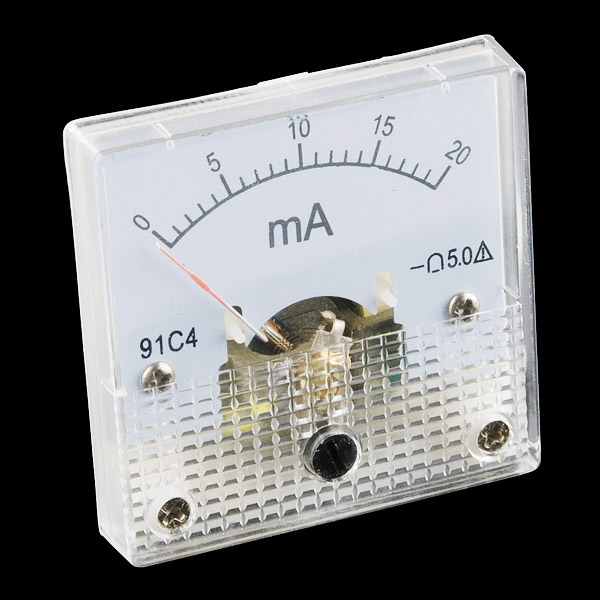
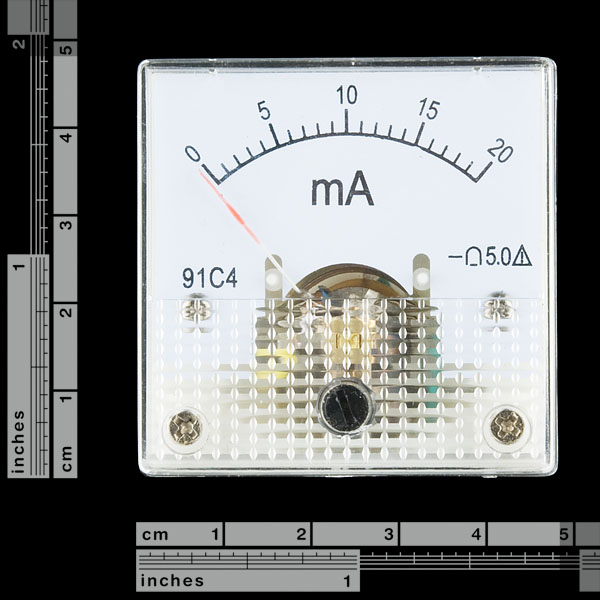
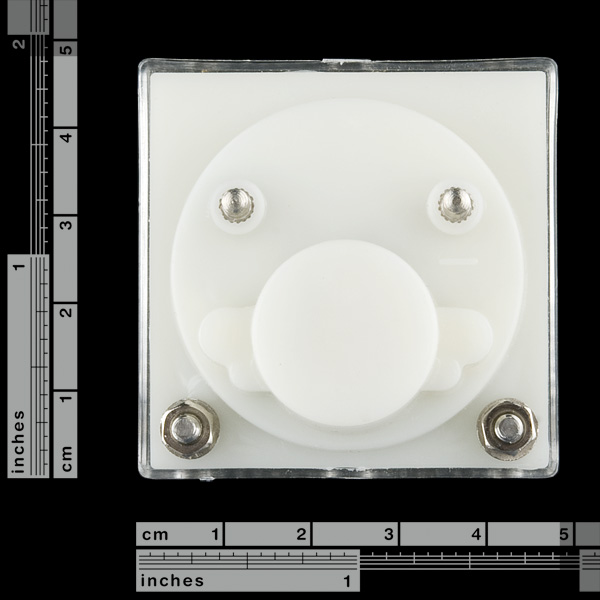
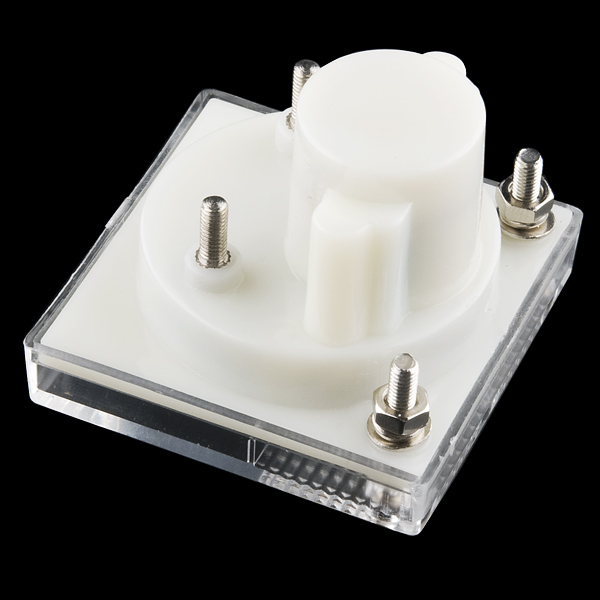
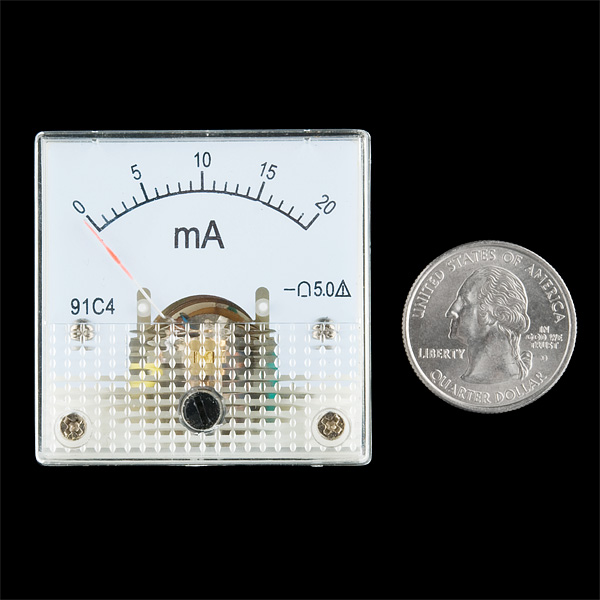
If anyone is looking for a printable template for the background scale, I have posted one here
Is this a taut band or a pivoted movement? The info sheet doesn't say. (I'm asking because a pivoted movement can be repaired and adjusted, but a taut band type is garbage if the band breaks.)
I just received the analog amp meter, and I noticed that the reader is off by a few milliamps.
Is there a way to adjust the reader?
As Taper mentioned, there should be a zero adjuster on the front panel. If it's still off after zeroing it, you may have to add external series or parallel adjustment resistors.
If your meter matches the product picture, the black circle with the slot at bottom-center should adjust with a screwdriver. I couldn't make out the corresponding feature on the "Product Sheet" image.
For the three units I received, I had to make a decision on whether to connect the wires to the terminals, or be able to fasten the meter to a panel, because only two nuts ship with the meter. I contacted customer (dis)-service and they blew me off, not even a sorry, we will send some more. SF has lost a customer over $.05 worth of metric nuts. They aren't the only place to get parts...
If you refer to the picture above, you will see there are only nuts for the mounting holes. I apologize for you getting blown off by customer service, but this is how they come, and this is how they were sold to you. The screws are relatively easy to find at any hardware store. If we had to source them, sort them, and bag them up with each unit, we'd have to charge more. Once again, we're sorry for not being more helpful, but it wasn't meant to come with nuts for all the posts, just for the mounting lugs.
You should stock some with lights in them, for a more vintage feel :)
I purchased two of these meters. The resistance measures between 3 or 4 ohms and it does have an internal shunt resistor. The windings look similar to the size used in the volt meter and might actually be the same movement. Again, these meters are easy to disassemble and change the shunt resistor if desired. One of the two meters didn't work initially and when I disassembled it, it started to work. I resoldered some joints and it still works. The quality is rather low, but it still a good deal for the price.
Mark
What's the voltage drop and/or series resistance of this meter?